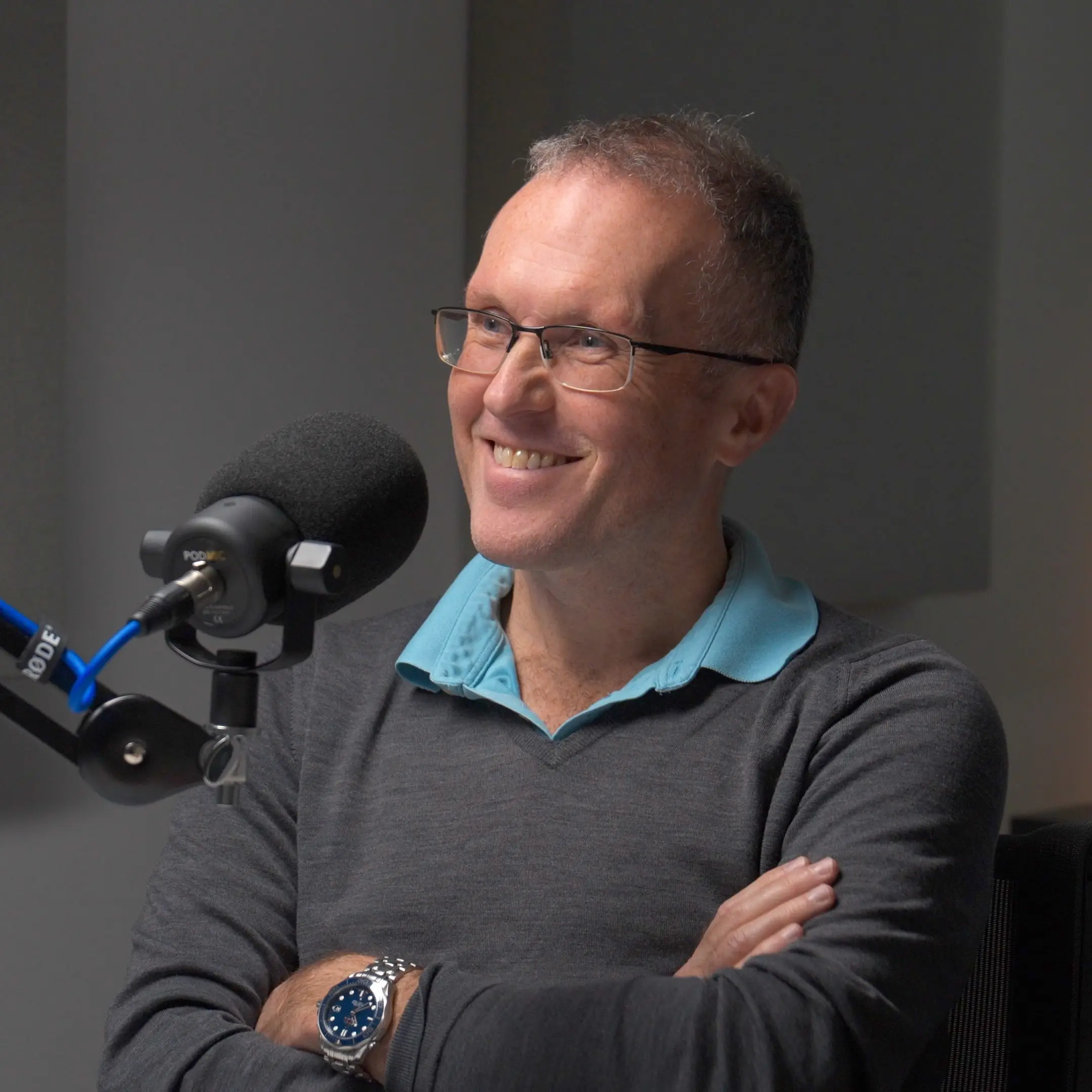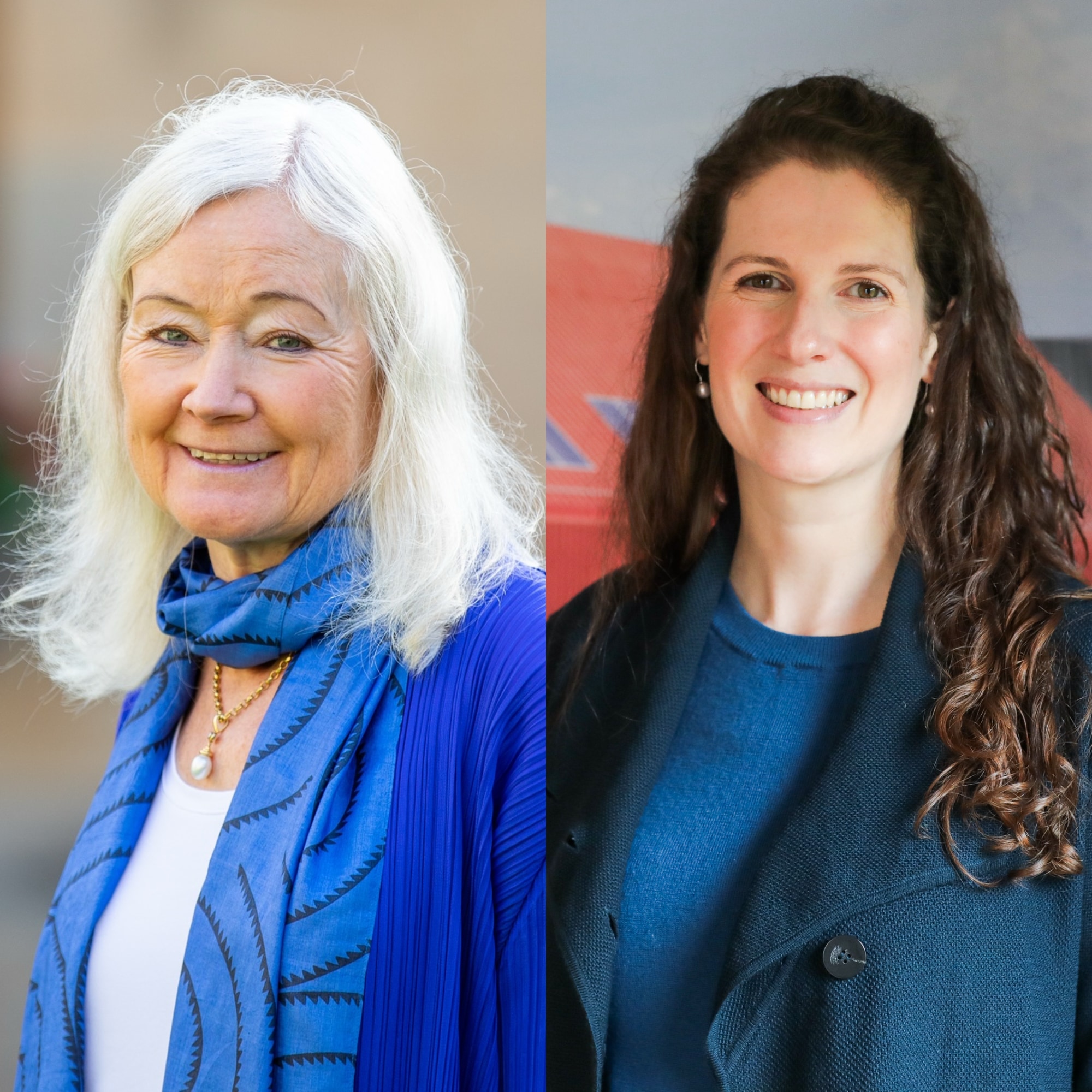Oxford North: The New Innovation District in Oxford
.png)
.png)

How do you design a physical space that matches the lightning-fast pace of modern scientific discovery? This episode explores the new paradigm for innovation districts with Professor Dame Kay Davies and Victoria Collett of Thomas White Oxford, the development company of St. John's College.
The conversation covers the critical transition from academic lab work, where Professor Davies has spent 30 years researching Duchenne Muscular Dystrophy, to the intense, milestone-driven world of biotech spin-outs. Victoria Collett, Development Director for the £1.2 billion Oxford North project, explains how its mixed-use, master-planned environment—complete with flexible lab spaces, public art, and community areas—is specifically engineered to foster the "serendipitous moments" crucial for breakthroughs.
Kay and Victoria also discuss the vital importance of connectivity, noting that the UK’s life sciences VC investment has been selective recently, making integrated innovation clusters like Oxford North, which is positioned on the East West Rail corridor, essential for capturing future talent and growth.
Professor Dame Kay Davies: An acclaimed academic and innovator, she is Emeritus Dr Lee’s Professor of Anatomy at the University of Oxford and a Fellow of Hertford College. Her research group has an international reputation for work on Duchenne Muscular Dystrophy, an effort that has driven her journey from the academic lab to founding biotech spin-out companies to deliver effective treatments to patients. Her insights provide a critical 'user perspective' on the needs of a pioneering science ecosystem.
Victoria Collett: Development Director at Thomas White Oxford, the development company of St. John’s College, where she led the creation of Oxford North. A chartered surveyor with over 20 years of experience in development and regeneration, Victoria specialises in large-scale mixed-use masterplans, bringing a unique perspective on community, placemaking, and commercial flexibility to the £1.2 billion global innovation district.
[00:00:01] Susannah de Jager: Welcome to Oxford+. The podcast series for innovators and investors brought to you in partnership with Mishcon de Reya. My guests today are Professor Kay Davies and Victoria Collett from Thomas White Oxford, the development company of St. John's College Oxford. Kay is an acclaimed academic and innovator Emeritus Dr Lee’s Professor of Anatomy and co-director of the MD UK Neuromuscular Center at Oxford with a distinguished career spanning genetics, physiology and medical research. Victoria is a development director at Thomas White Oxford, and led the creation of Oxford North a 1.2 billion innovation district launched in September 2025, developed in partnership with Stanhope, Ontario Teacher's Pension Plan and St. John's College. The project includes 1 million square foot of labs and workspaces, plus 317 new homes with the Hill Group.
I'm very much looking forward to discussing Oxford North and its recent launch with Kay and Victoria, who bring very different perspectives. Kay, as an academic and Victoria as a specialist in mixed use developments.
Kay, Victoria, thank you so much for joining today.
Kay, I'm gonna start with you because you come at this from the academic, innovator, the user perspective, for those listening a bit of context about your background, your work within companies, and then we'll lead on from there.
[00:01:28] Professor Dame Kay Davies: It's very good to be here and tell the story. Actually, I have been working on a tragic disease called Duchenne Muscular Dystrophy, which is a muscle wasting disease for the last 30 years of my life. These patients go into a wheelchair at 12, used to die at 20, now survive into their thirties. But it's a terrible wasting disease and there is no treatment.
So I've dedicated my research career to finding a cure, at least, an effective treatment for these boys.
[00:01:56] Susannah de Jager: I'd love to hear a bit about the structure and the companies that made up your journey through trying to cure a disease. It articulates a lot of what places like Oxford North have been built to help with.
[00:02:10] Professor Dame Kay Davies: It's important to realise that you can start in an academic lab, you can work out what causes a disease, you can then develop a potential treatment, but the only way you can get it to patients is to set up a company and spin out. I did that for the disease that I studied DMD and that's what Oxford North is all about, facilitating that interaction.
It also facilitates the academic interaction because sometimes the clinical trial doesn't work. You have to go back to the bench and then back to the company to set up another clinical trial. So it's needs to be flexible, it needs to be multidisciplinary, and it needs to be very connected to the biotech environment.
[00:02:50] Susannah de Jager: And where are you in that cycle at the moment.
[00:02:53] Professor Dame Kay Davies: We've taken one drug to the clinic, which didn't work after, a year, so we had to go back and do more studies to find out why it didn't work. We're now at the point where we know why it didn't work, and we've done future screens to get a new drug. So we're just about, in fact, to think about setting up a company to take this drug to the clinic.
[00:03:11] Susannah de Jager: Amazing.
So you really have been in the academic, in a commercial, then back in the academic, so you can speak so knowledgeably to that experience and for those listening that perhaps haven't had that experience, what are the differences that you observe between that academic setting and that more commercial setting that really might not be evident to people that haven't been in them?
[00:03:33] Professor Dame Kay Davies: The most important thing is once you go from an academic lab into a company, you have serious milestones. So you are all very focused on getting the drug and getting the right endpoints and also interacting with patients and patient organisations So it's completely different. The pace is different. You can't afford to fail. So there's an intensity of work and interaction with patients and their families because they're relying on us to try and do our best to get a drug to work properly.
[00:04:01] Susannah de Jager: And in previous spaces you've experienced, how have you found that some of those things have either not necessarily been well served and what have been the positive things that you've experienced where you thought, gosh, that was just so well thought through and that really worked so well for us at that moment.
[00:04:17] Professor Dame Kay Davies: That's a bit of an unfair question to ask me because if you begin sort of 20 years ago and when we did the clinical trial, which is some years later in 2018, we already set up a company. I think when we first decided to go commercial, the university, even the University of Oxford, which is ahead in this sphere, was not quite ready to set up lots and lots of companies. That landscape is now completely different, which is why Oxford North is so timely. We can interact with industry much more. There is still a shortage of venture capital. But that's a problem all the way around the world right now. But, the most exciting thing is that it took us 30 years to go from knowing what the gene was to taking things into the clinic. That is now much shorter because of AI and just general technology developments within that pipeline. So this is perhaps one of the most exciting times in science, and what we have to do is make it the most exciting time to deliver that science to the patients.
[00:05:14] Susannah de Jager: And just before we move on, because I'm so keen to bring Victoria into this conversation too, and talk about some of the ways in which Oxford North has been designed for sort of almost the kind of the call to action slash problem statement that you're articulating. I would love to know from your perspective now with your company, how would you see, obviously in an ideal world, the next five years developing and your evolving needs in a space?
[00:05:40] Professor Dame Kay Davies: Well, first of all, you need to start small because you'll do a small clinical trial in phase one, and then we need to expand nationally and then expand internationally to capture all patients. So we will have to set up a bigger management group, and I think the experience of other companies, even within Oxford North, will allow us to collaborate and learn in that space.
We learn from each other. Each experience is different. There are always massive challenges. There are also massive dips. The thing is to catch the dips against someone else's positive, cause it keeps everyone optimistic about the outcome. So I think you need an ecosystem where you get all of that. You get the science and you just get the spirit of what you're doing, and the real need to act fast.
[00:06:27] Susannah de Jager: And you, And you keep coming back to that the sort of need for urgency, the pace, and the real difference in these more commercially orientated spaces versus the academic, which has its own tempo and cadence.
Victoria, when you are developing the space that you have with Oxford North, how is that being incorporated into how you build leases, accommodate, and quite frankly, just think about filling the space.
[00:06:53] Victoria Collett: The whole environment has been designed to enable discovery and with the scientists need for urgency in mind. So in terms of the physical space the buildings are clustered around Fallaize Park, which is about the size of Trafalgar Square, to give you an idea of scale, and they all look out over the park and have this beautiful environment, which should sort of stimulate inspiration and also help people relax when they're in this very fast paced, intense environment because that's very important too. That space is a gathering place for people to meet, to bump into each other and hopefully to have interactions that can further their research in the most sort of convenient way possible.
The Red Hall has been designed to be a gathering place as well. It has a cafe for the whole estate, and we hope that our tenants will use that as a space to meet and to collaborate as well. And then in terms of our approach towards being a landlord, we want to partner with our companies and make real estate easy for them because it's the least important thing that they're doing. They need a space to do the science, but they shouldn't be thinking about that space and how it works.
So we want to understand their business and be as flexible as possible, both during growth stages and contraction the space needs may change and the buildings are very flexible. So they can either flex their requirements within the space they occupy or look at other spaces within our estate and we have detailed planning consent for three more buildings that have got custom designed lab space of various different configurations.
So that gives the potential for very fast growth, which we do see sometimes in these companies and that's obviously what people are aiming for.
[00:08:40] Susannah de Jager: Is there any specific type of innovative science that you are focused on?
[00:08:46] Victoria Collett: Yes, absolutely. I think we were particularly, focused on early stage R&D that requires these serendipitous moments and that community spirit where people can learn from each other and share both the good times and perhaps the low times that businesses go through, as they're spinning out and scaling up.
But in terms of sectors, life science, biotech, ai, quantum, and the professional ecosystem that supports it, are all catered for and SMEs through to big companies can be accommodated. We have fitted labs being built at the moment, which are available from 1000 square feet, so that could be a team of five just coming out of one of the Oxford incubators and then we have really landmark HQ buildings that have detailed planning that bigger companies could move into.
[00:09:37] Susannah de Jager: Amazing. So it's quite an interesting mele of things you're trying to support because there's that urgency that I'm hearing both of you speak to. But there's also space and community and actually trying to find and house both of those could feel contradictory. But as you articulate, the urgency is almost sort of threaded through the way in which you're building the contracts, if I'm hearing you correctly, and how you can accommodate on that side and really make it a non-problem for them, and then the creativity and the spaces and the community is very much embedded through this space itself. So there's both the design of space and there's the design of how you interact and I'd love to hear Victoria, a little bit of from your background specifically and how youbrought your own expertise to those respective areas.
[00:10:27] Victoria Collett: So I came into this project working for Thomas White Oxford three and a half years ago and I came into it not having a background in science parks. I've majored on mixed use developments throughout my career. Starting off in regeneration in some of the most difficult urban areas in the country and then I worked abroad and did huge mixed use master plans that were aiming to support both local populations need for leisure as well as encouraging visitors to come into the area and that mixed use complexity is what I enjoy, and the ability for thedifferent types of space to compliment each other.
For example, housing in a mixed use master plan brings in much more of a 24 7 atmosphere and makes sure that there are people around all of the time and people using your open spaces all of the time, and that's very much the intention of Fallaize Park, is that it's a park that is used by the local community, both existing and new, as our new residents move into Oxford North. We have about 10 homes occupied at the moment, which is fantastic. But we are looking forward to having even more residents moving in.
I've brought that leisure approach and the need for mixed use to animate space from my past and brought it here and what's really been interesting at Oxford North is how all of those elements are present already.
But bringing in the science and the laboratories, but also art and culture. We have a very strong public art program, which was stimulated by Section 106 commitments or originated by section 106 commitments but has actually really turned into a large part of our ethos because we found that bringing the science and the art together stimulates creativity across the two in a way that having silos and making people think that they're a science person or an art person isn't very conducive to creativity.
[00:12:29] Susannah de Jager: I think that really came through at the launch the other day was this importance of cross disciplinary of the sort of water cooler opportunity of just the stimulation of place, of art, and these things seem terribly obvious now, and I spoke in my most recent interview to Dan Geoghegan about the same thing at Bicester Motion.
They seem obvious once you do them, but 20 years ago, to Kay's point earlier, they weren't so obvious. So this is still an evolving area and one that particularly places like Oxford that have all this amazing history, these historic buildings, but often a sense of it being behind closed doors, it can be very hard to adapt the traditional spaces and therefore it feels even more important that all these new spaces are taking advantage of the opportunity to be open within the community and to encourage that mutual benefit of two-way flow.
[00:13:28] Victoria Collett: You've really hit the nail on the head with how Oxford is a very stimulating environment and I think as you say, it's obvious once somebody's pointed it out. But the beautiful buildings, and the culture, that the sort of depth of culture, that enriches every corner of Oxford is obviously something that has helped it to be such an innovative place and such a stimulating place for scientists.
So bringing that to Oxford North through new public art is really important and also the quality of the architectural design and how that is also very important to people that they work in an interesting place. Going back to something that Olafur [Eliasson] said in his in conversation with event during our launch. He pointed out that the sculptures in Fallaize Park are almost like campfires. So they're actually planets with a lovely structure supporting them that includesa circular bench and people can sit on that and face inwards around a campfire and that planet provides the illumination and that gathering point. It was very interesting to hear him say that that was part of his inspiration. So he saw our park and was stimulated to create that campfire approach where people can gather and talk and be inspired in the way that, you know, humans always have been looking up to the stars and thinking about our place in the universe and inspiring awe and wonder is a very creative thing.
[00:14:58] Professor Dame Kay Davies: The other thing about the park is that it's a destination. So even if you're not involved in Oxford North, you can still go to Oxford North and meet other people that are there, and I think that's where it'll catalyse future growth and future interactions and actually more innovation, as you say.
[00:15:14] Susannah de Jager: I love that image you just evoked by the way. And I didn't have the pleasure of joining that evening where Olafur Eliasson presented his work. But I think that idea of sitting around a campfire and the creativity, but it also takes me back to the sort of our evolutionary anthropological beginnings, which we covered recently with Robin Dunbar and As we've already touched upon, we can forget that we haven't evolved very far beyond those moments, even though we think we have and that things are still so important for building community, creativity and all these things that we want so much.
[00:15:51] Victoria Collett: Yes, absolutely. So the other facilities available in the Red Hall are, a town hall that would seat a hundred people and it can be configured in various ways. But also some touchdown coworking space that can be used by anybody. I think in Oxford, we've all had the experience of walking into a coffee shop to find that there are no tables available because there are so many people on their laptops and that that's quite frustrating for cafe owners. So we designed the Red Hall to be a space where people can sit all day and work or work in between meetings. And so bringing people into that space and in the warmer months into the open space will hopefully help our tenants as well.
[00:16:29] Susannah de Jager: I personally love it, but I was deeply amused by Lord Hague, who is, as most listeners will know, the chancellor of the University of Oxford. Now commenting that he can't see red and Victoria, you just told me that neither can the architect.
[00:16:44] Victoria Collett: It has caused some comment locally and it was intentional that it would stand out, and that's for two reasons. Both for a sort of external audience to be an iconic building representing the best of Oxford now and future. So to contrast again with those, you know, historic buildings and that weight of sort of antiquity and to showcase the best of the innovative future spirit of Oxford as well.
People have, you know, mentioned being able to see it from the A34 and that they like that because now they can see where North Oxford begins. But then it's also intended to be a marker for people who are coming into the district or walking around the district. In the future, when the rest of the buildings are built, people will see a slither of the red from any direction and it's a way finding device so that people always know where that cafe is, where that center is, the reception for the whole estate is in that building. So if you are coming to Oxford as an investor and you get a taxi to Oxford North, well, where does the taxi drop you off within the estate? You don't want to be sort of left in the wrong place. Well, it's pretty obvious the taxi's going to drop you at the Red Hall.
[00:18:00] Susannah de Jager: Increasingly what we're discussing is, as we mentioned, now received wisdom, whereas it wasn't a while ago. But are there material aspects that you think even within that context of people know about community, creativity, innovation, clustering, are there things that you think make Oxford North particularly unique?
[00:18:19] Professor Dame Kay Davies: I think the proximity to the academic environment is good. You can just get on a bus and you can be there. I mean, I set up a company, but I was never a company director or CEO. I was just part of the scientific advisory board and a lot of people do that. They want to continue their academic pursuits while setting up companies.
The very fact that we've got good cycle networks, a bus stop outside Oxford North, it just makes things so much easier and means it's 15 minutes, let's not exaggerate, to get from the center of Oxford to Oxford North. And so that makes a huge difference.
[00:18:54] Susannah de Jager: How close is Parkway?
[00:18:55] Professor Dame Kay Davies: Yes, on, on the, on the shuttle bus that we'll be laying on, it will be five minutes away. Thinking about the East West rail line and really bringing the whole region into one, you know, Silicon Valley type area. Which I think is particularly important for tenants that will hopefully be coming to the UK from the US it's really important to note that our end of the East West rail is already built.
[00:19:20] Victoria Collett: So I say that West Rail is already there and the links up to Milton Keynes and Bicester are either complete or very nearly complete already on existing rail tracks, and that gives us an enormous catchment, both of talent, in terms of bringing people in to work in the businesses. But looking in the opposite direction. It puts a lot of areas of more affordable housing within reach of anybody who's working at Oxford North. So we're very excited about that.
[00:19:48] Susannah de Jager: You've got the rail, you've got the cycle, you've got the buses, quite frankly, if you had the time and the weather, you could walk as well.
There's another important point in that is you can't do without links to your colleagues in other universities, and that means Cambridge people can come over. But they can drive and they can park. But more importantly, a lot of colleagues from London and I collaborate with a neuromuscular clinic at Great Ormond Street. They can come to a meeting at Oxford North with ease, actually easier than traveling across London for another meeting. And it is so important and so often I've heard in interviews here, both complaints and acknowledgement of the fact that the Golden Triangle is smaller than the whole of Silicon Valley, you know, fits in the pocket, and yet we often talk about them as separate ecosystems, and with the Oxford Cambridge Arc, still now under development, but hopefully, in relatively short order. It's really encouraging that acknowledgement that we do need this connectivity and it is so important that we are one ecosystem. Obviously with a bit of healthy competition.
[00:20:53] Professor Dame Kay Davies: Yes, there's always healthy competition, which is in, of course, healthy in itself. But, it's all science led, so we're already collaborating. So by the time they get that railway and road built, we'll be well bedded into collaboration and innovation and ready really to make it even more exciting.
[00:21:11] Susannah de Jager: And at the moment, I know that it's still under evolution and development, but it's a vast site and there's more coming. What are the plans for growth? What's the sort of aspiration for are we talking about, 30 businesses? Are we talking about 200? How do you see it evolving?
[00:21:26] Victoria Collett: I think it will be somewhere between the two. In terms of the physical space, we've built about 15% of the workspace, and over half of the housing is under construction and most of the infrastructure and open space is already delivered. In terms of amenities, we have a large amount of retail and food and beverage still to be built within our outline planning. We also have a hotel up to 180 rooms that will be coming forward. We have a plot that we've dedicated towards a nursery and some leisure facilities. The exact nature of that is under discussion because people's needs in relation to gym space or studio space are very fast moving. There's a big trend towards padel at the moment, at other times people are more interested in yoga or pilates or weights. So, the exact configuration of that space is to be decided.
We have a lot of housing allocations aroundNorth Oxford, and Kidlington, Yarnton and Begbroke as well,and that will only enhance the links in that area and the environments for anybody who's living or working at Oxford North. It's all very iterative that bus links improve and the A40 project will come forward to improve those cycle and bus links all the way to Eynsham and Witney.
[00:22:49] Susannah de Jager: And these things can seem a little bit kind of mundane, right? You know, kind of planning and transport links. But the reality is that those are the things that make a huge difference to the day-to-day experience of investors coming to visit of employees getting into work, and they really make a difference to everyone that needs to contribute to the success of a venture.
So these are actually not small things, and I think that furthermore, when we look at the community, that connectivity and that sense of, as we all know, but some listening might not, there's huge dispersion in Oxford, and some of the benefits of innovation can feel like they are limited to a few. Sites like Oxford North are so important to making that point of it is meant to benefit people outside of those sometimes seen as quite closed corridors.
[00:23:41] Victoria Collett: Yeah, I think that's a really good point to make. Again, particularly for an international audience, it's not helpful if people in Oxford talk about little corners of Oxford and give the impression of a closed shop. I think it's important that we all come together to sing the praises of Oxfordshire as a city region that has a wonderful innovation ecosystem, both existing and in the future.
It's been very exciting to see the university and government all coming together to help Oxfordshire to achieve its potential. So the Oxfordshire Developers Forum has been set up by the county council to enable the different estates and landowners to come together. The university has OSIT which will be launched in November, and that's enabling, again, both developers to work together, but also investors and businesses to work together with the university to make sure that Oxford really makes the most of all the wonderful research and talent that we have.
Even our house builder currently building out Canalside Quarter, the Hill Group. It's been wonderful working with them because they really understand the need to build a community and that involves also sort of bringing in the idea of inclusive growth and making sure that local people share in the prosperity generated.
So they've worked with us really hard on all of our social value commitments around local employment and local procurement, and it's just been really refreshing to have these partners who share our values.
[00:25:15] Susannah de Jager: Before we started the recording, we were joking, about shareholders and the importance of shareholders and Kay, you were saying that a piece of news came out on a company you advise and that it was well received, which is obviously fabulous. But we are all so often subject to shareholders, and that's pretty well understood in companies. It's not always as well understood when you are building a science park and innovation area, and yet I heard it said at the launch and it rings true because they have literally been around forever of St. John's College as a forever landlord.
And I wanted to hear from both of you, potentially, how that longevity of view by St. John's College has both informed the development itself, but also the perspective they can bring to things like flexibility for lease, for tenants, going forward.
[00:26:07] Victoria Collett: That's a really important point, because I've always worked for very long-term investors or institutions that have a remit to consider the greater good and to invest in an area for the long term, rather than, building a building and then going to build a building somewhere else the next year.
And St. John's has been here since 1555 and has owned the land under Oxford North for that period. Therefore we invest in the long-term quality of the development physically, but also in the long-term community, and that's both with existing stakeholders andthe surrounding communities of Wolvercote and Cutteslowe and Kidlington. But actually it also means that we can take a much longer term view with tenants and that when I said that we want to sort of be their partners. That's because it's in our own best interest too. We want to see the next Oxford unicorn just as much as everybody else does because we want them to grow within our estate.
[00:27:11] Professor Dame Kay Davies: And of course, St. John's gives the ambition. I mean, it's a renowned college. There are a lot of really bright entrepreneurs that are coming through the student body all the time.
They're curious about what is exciting going on around the Oxford, Oxford North, and the rest of the Oxford ecosystem. So there's a real touch point all the time between the next generation of scientists and what's happening out in Oxford North.
[00:27:35] Victoria Collett: Yes, that's so true. One of the things I've enjoyed most about working within St. John's College is the wonderful paradox between the ancient buildings and this huge weight of intellect andinnovation that sits, you know, sort of in every, brickof the buildings.
But then you have new students coming in every year with a totally new perspective, and the generational changes are so interesting to see coming out in the way they approach the world. And it's just really fascinating and again, very stimulating to think about that intersection of ancient history combined with these vibrant young people who have their whole lives ahead of them.
You mentioned earlier about the long-term nature of the investment, and I think that's one of the things that does make Oxford North unusual, is that the partners involved share that long-term view. And, our partners, Ontario Teachers Pension Plan, have a very, you know, long-term quality investment angle, because they'll also be holding their share of the estate in the long term and our development manager Stanhope, also holds its investments and so that investment upfront, which, you know, it's hard to do that because, it costs more. But the investment upfront in quality means that, you have a better quality asset at the end of it.
[00:29:01] Susannah de Jager: And that alignment is so key because as we all know, whether it's a small company or as we're articulating here,a group of buildings being built for innovation, misalignment of interest can cause so many issues. And so, you know, St. John's, Ontario Teacher Pension Plan and Stanhope as partners, for the reasons you just articulated, seemed like a very harmonious sort of trip tech if we to use the artistic reference point. I am on a WhatsApp group for something called The Inklings, which is...
[00:29:30] Professor Dame Kay Davies: Oh, me too.
[00:29:30] Susannah de Jager: Kay. You will have seen this
[00:29:32] Professor Dame Kay Davies: Yeah. Yes.
[00:29:33] Susannah de Jager: It was sort of what I will call lighthearted banter about a rumored tunnel that used to exist or potentially existed between the Eagle and Child, now owned by Larry Ellison and the Ellison Institute of Technology and the Lamb and Flag, which harks back to Tolkien and CS Lewis, and this idea of sort of mystical tunnels between the two.
St. John's College used to own both of these pubs and was hugely embedded through the history of innovation of brilliance, of clearly the most leading creative minds, and so I think it's so apt that they are the shareholder building something like Oxford North, which I deeply hope has a tunnel linking it.
Kay, Victoria, thank you so much. I really have so enjoyed learning a bit more about Oxford North, but also why it's been built the way it is which I think is so important.
[00:30:26] Victoria Collett: Thank you Susannah.
[00:30:27] Professor Dame Kay Davies: Thank you very much.
[00:30:28] Susannah de Jager: Thanks for listening to this episode of Oxford+, presented by me, Susannah de Jager. If you want to stay up to date with all things Oxford+, please visit our website, oxfordplus.co.uk and sign up for our newsletter so you never miss an update. Oxford+ was made in partnership with Mishcon de Reya and is produced and edited by Story Ninety-Four.


More episodes+

The Multiplier Effect: Funding Companies, Ecosystems, and the Future of the UK
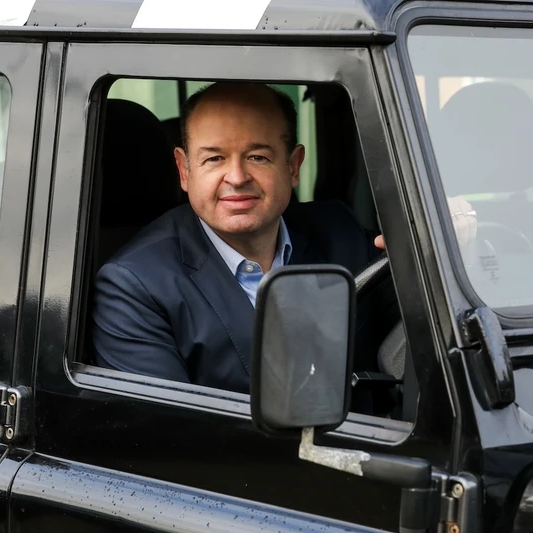
The Cluster Effect: How Bicester Motion is Driving the Future of Mobility
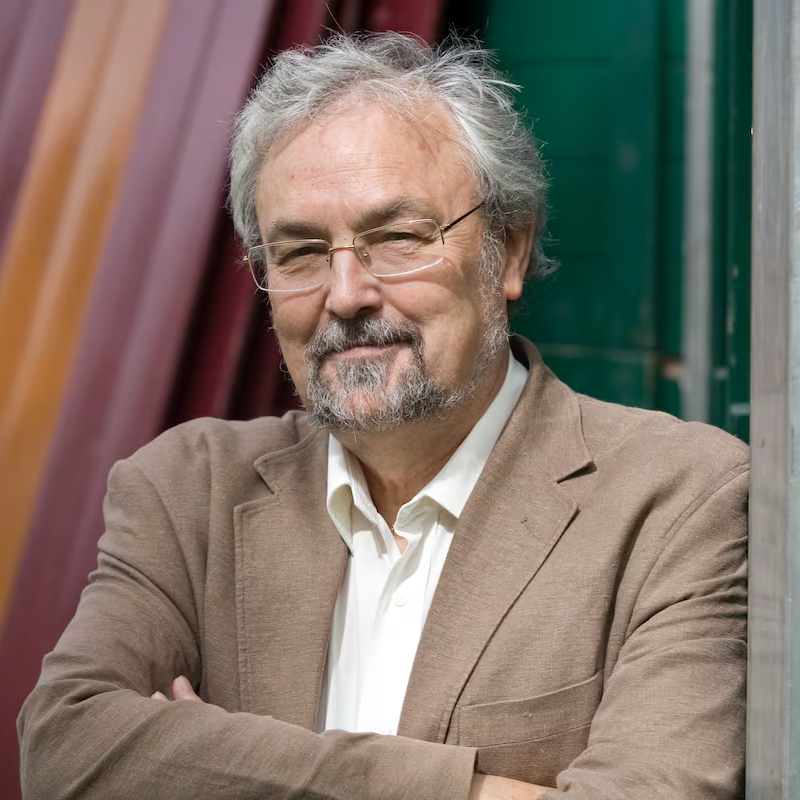
The Psychology of Scaling Companies and Teams with Professor Robin Dunbar: Part 3

The Psychology of Scaling Companies and Teams with Professor Robin Dunbar: Part 2

The Psychology of Scaling Companies and Teams with Professor Robin Dunbar: Part 1

The Future of Genetic Medicine with Zandy Forbes, CEO of MeiraGTx
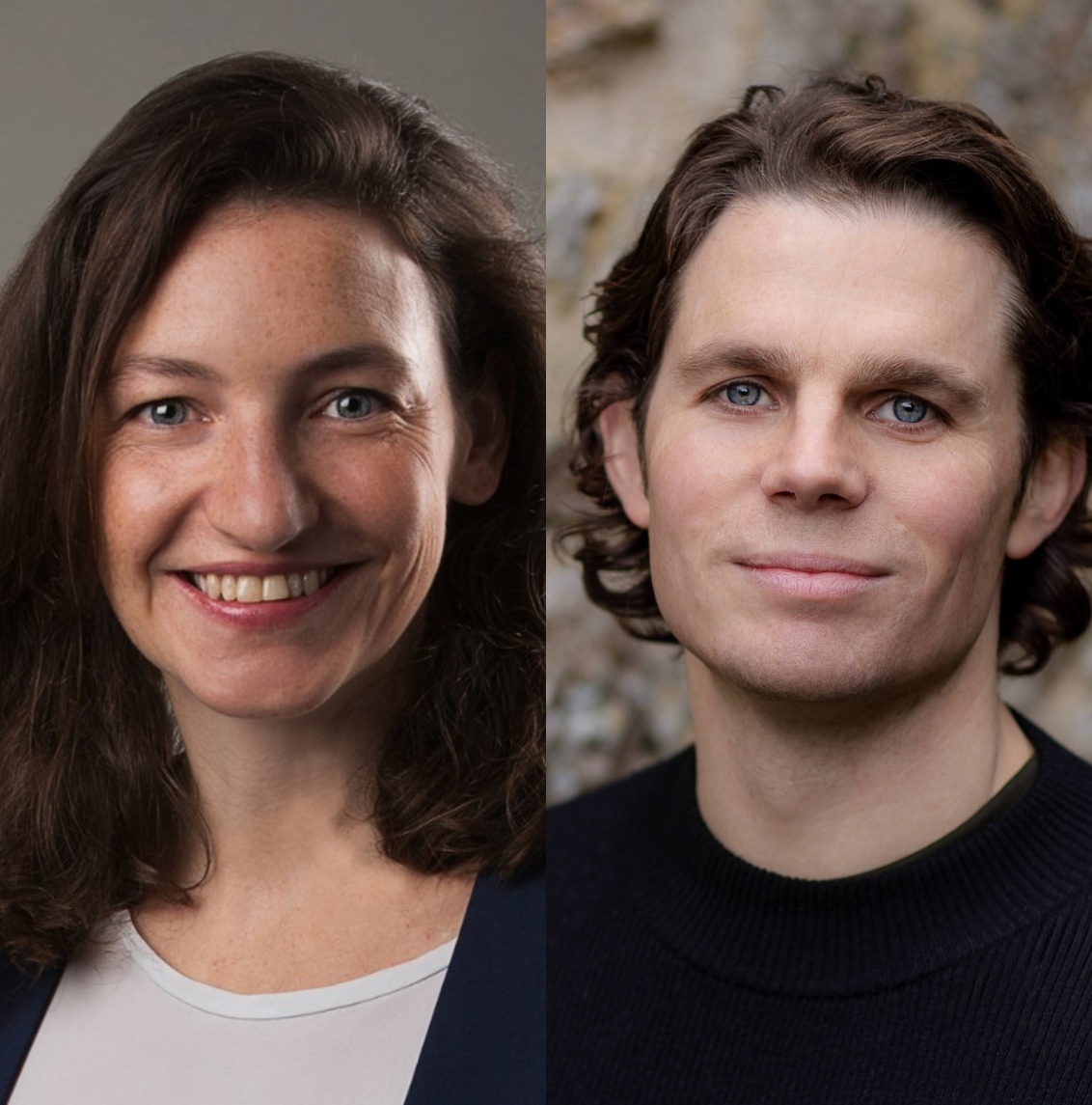
How Founders Pledge Uses Data to Maximise Philanthropic Impact

The Oxford Trust at 40: How Innovation and Education Power Oxford's Future

Can Sirona Rival Ozempic? A New Chapter in Obesity Treatment with Camilla Easter

Aligning Founders and Investors with David Mott

Building Billion-Pound Outcomes with Jack Edmondson

How Machine Learning in Oxford Is Transforming Medicine Worldwide with Lionel Tarassenko

Bringing Science to Society with Molly Stevens

How Oxford University Innovation Bridges Science and Business with Mairi Gibbs
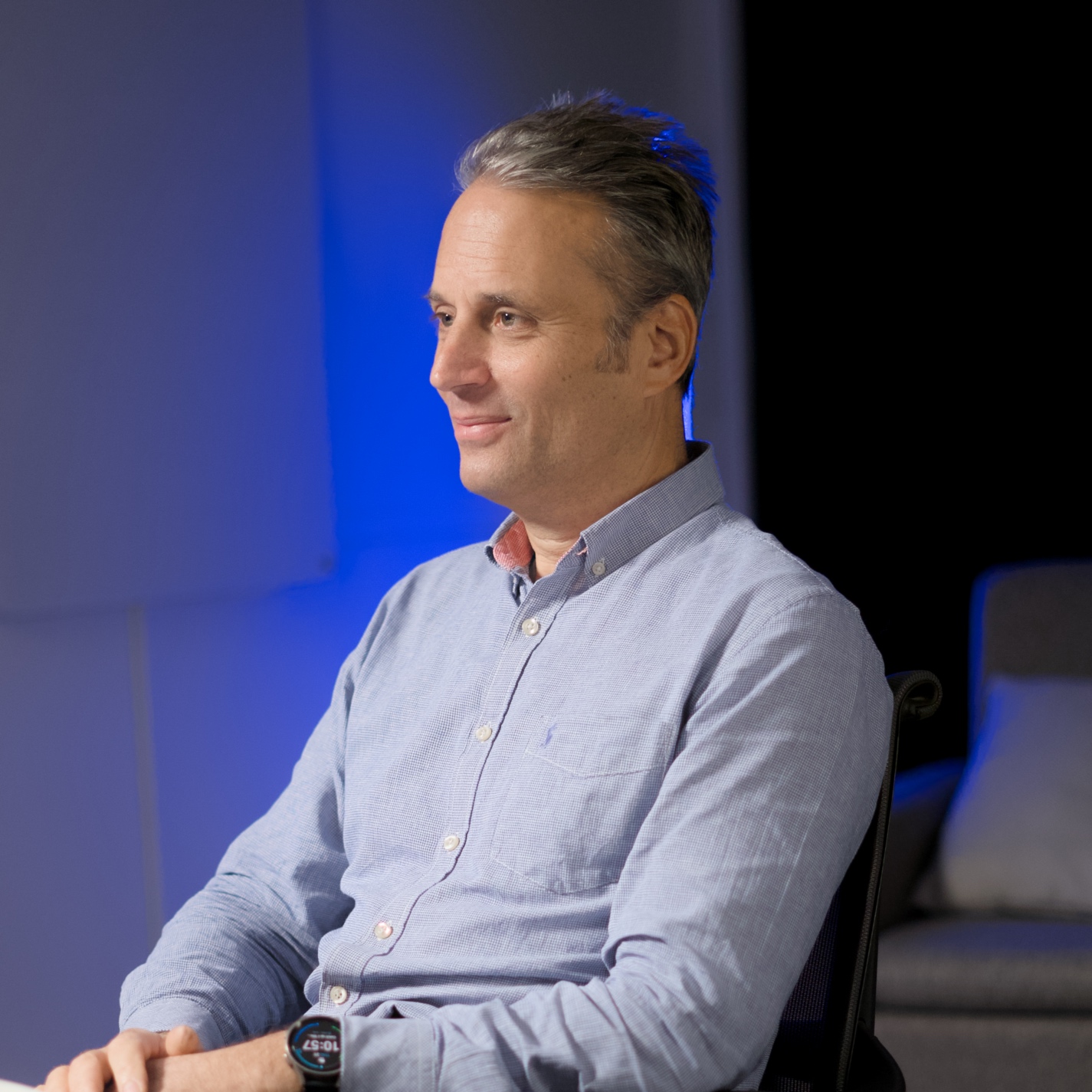
What Formula One Teaches Us About Startups and Success with Adam Parr

Risk and Reward in Early-Stage Tech Investments with George Robinson

Charting Fresh Career Paths with Sue Douglas

From Oxford MBA to Startup CEO with Lily Elsner

Navigating Market Dynamics with Marcus Stuttard

Harnessing Local and Global Talent with Sarah Haywood

Navigating Capital Markets with John Derrick
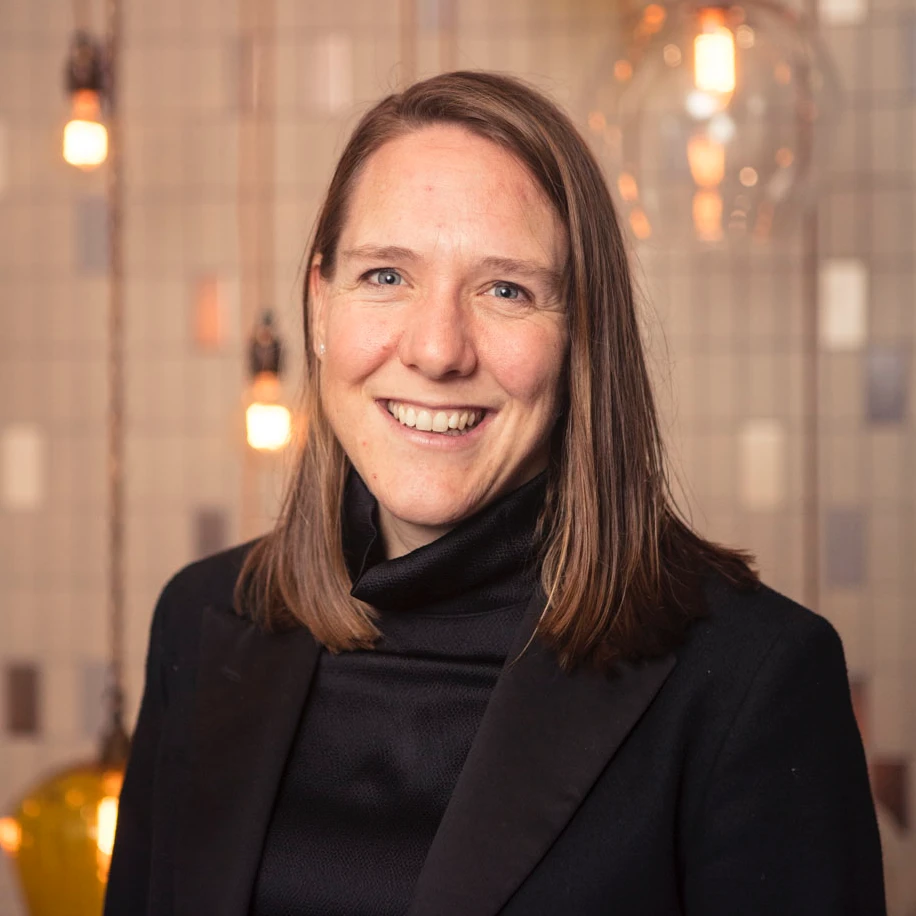
Building Oxford’s Future with Anna Strongman

Breaking the Myths Around University Spin Outs with Irene Tracey

Navigating the Future of Oxford Sciences Enterprises with Ed Bussey

Oxford's Role in the Next Industrial Revolution with Dave Norwood

Diversifying the Investment Ecosystem with Rowan Gardner

Pension Investment and the Mansion House Compact with Nicholas Lyons

Lessons from the Motorsports Cluster with Mark Preston

From Research to Reality with Cici Muldoon

Nurturing Founder-Driven Ventures in Oxford with Peter Crane
